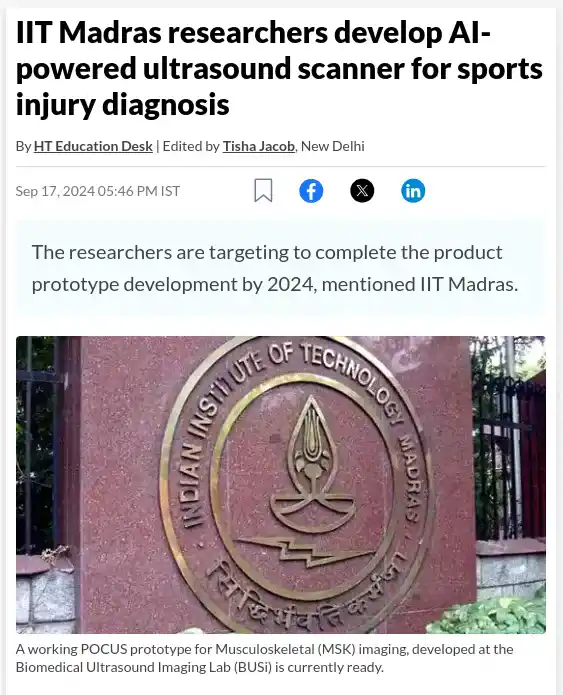Table of Contents
Ultrasound imaging, a non-invasive and radiation-free medical diagnostic tool, has long been an indispensable asset in modern healthcare. By utilizing high-frequency sound waves to create real-time images of the body’s internal structures, ultrasound technology enables healthcare professionals to visualize and assess various organs and tissues with unprecedented clarity.
This is where AI in Ultrasound comes in – a game-changing innovation that has revolutionized the field by providing enhanced diagnostic accuracy, efficiency, and patient care. By leveraging machine learning algorithms and advanced data analytics, AI-powered ultrasounds have been able to overcome traditional limitations and take ultrasound imaging to new heights.
The Power of AI-Powered Ultrasound Imaging
With AI-powered Ultrasound, healthcare professionals can now benefit from:
- Improved Diagnostic Accuracy: AI-powered ultrasounds utilize machine learning algorithms to analyze images with greater accuracy, reducing false positives and enhancing patient care.
- Enhanced Patient Care: By providing more accurate diagnoses, AI in ultrasounds enables healthcare professionals to offer better patient outcomes, particularly for patients requiring emergency care or those with complex medical conditions.
- Streamlined Workflow: AI-powered ultrasounds automate routine tasks, freeing up healthcare professionals to focus on high-value tasks that require human expertise, and reducing wait times.
AI-Powered Ultrasound
AI in Ultrasound refers to the application of Artificial Intelligence (AI) and Machine Learning (ML) technologies in the field of ultrasound imaging.
In traditional ultrasound imaging, a sonographer or technician uses a device to produce high-frequency sound waves that bounce off internal organs and tissues. The echoes are then processed to create images on a screen.
With AI-Powered Ultrasound, advanced algorithms and software are used to analyze and enhance the ultrasound data, allowing for:
- Improved image quality: AI can help reduce noise, improve contrast, and increase resolution in ultrasound images.
- Enhanced diagnostic accuracy: AI-powered systems can detect abnormalities and provide diagnoses with higher precision compared to human operators alone.
- Increased speed and efficiency: Automated processes and real-time analysis enable faster imaging and decision-making.
- Personalized patient care: AI can help tailor treatment plans based on individual patient characteristics, medical history, and ultrasound data.

Some examples of AI in ultrasound applications include:
- Image enhancement and noise reduction
- Automatic image segmentation (e.g., separating organs or structures from surrounding tissue)
- Abnormality detection (e.g., identifying tumors, cysts, or other abnormalities)
- Predictive analytics (e.g., forecasting patient outcomes based on ultrasound data)
By integrating AI and ML into ultrasound imaging, healthcare professionals can improve diagnostic accuracy, streamline workflows, and enhance overall patient care.
The Current State of Ultrasound Imaging
Traditional ultrasound imaging involves taking multiple images of the body using a manual technique. While effective in the past, this approach has several limitations:
- Time-consuming: Manual adjustments and image interpretation can take up valuable time, delaying diagnosis and treatment.
- Potential for misdiagnosis: Human error can lead to incorrect diagnoses or missed abnormalities.
- Limited accuracy: Image quality may vary depending on operator skill and patient positioning
How AI-Powered Ultrasound Works
Artificial Intelligence (AI) is transforming medical imaging by enhancing image quality, detecting abnormalities with higher precision, and automating image capture. AI-powered systems use machine learning algorithms to:
- Automate image capture: The system takes multiple images of the body, reducing the need for manual adjustments.
- Enhance image quality: AI-powered systems can correct image artifacts and noise, providing clearer views of internal structures.
- Detect abnormalities: Machine learning algorithms are trained on thousands of medical images, enabling them to identify patterns and anomalies that may indicate disease or injury.
Benefits of AI-Powered Ultrasound
The benefits of AI-Powered Ultrasound are numerous:
- 20X faster imaging results: Automated image capture and analysis enable rapid diagnosis and treatment.
- Improved diagnostic accuracy: Enhanced image quality and automated analysis reduce the potential for misdiagnosis.
- Increased efficiency: AI-powered systems streamline healthcare workflows, reducing wait times and improving patient satisfaction.
- Enhanced patient care: Timely diagnosis and treatment lead to better health outcomes.
Future Developments and Applications
The future of AI-powered ultrasound is exciting:
- Integration with other diagnostic tools: AI-powered ultrasound can be integrated with CT scans, MRI machines, and other imaging modalities to provide a comprehensive view of the body.
- Emerging medical areas: AI-in ultrasound has potential applications in personalized medicine, precision health, and remote monitoring.
- Real-time analysis: The system can provide real-time analysis, enabling healthcare professionals to make informed decisions.

Case Study
Development of an AI-Powered Ultrasound Scanner for Sports Injury Diagnosis
The Indian Institute of Technology (IIT) Madras has developed an innovative AI in ultrasound scanner that enables rapid and accurate diagnosis of sports injuries. The scanner uses machine learning algorithms to analyze images taken from traditional ultrasound devices, providing healthcare professionals with valuable insights into the severity of injuries.
Traditional Ultrasound Approach
- Manual Analysis: In the past, radiologists relied on manual analysis of ultrasound images to diagnose sports injuries.
- Time-Consuming Process: This process was time-consuming and often resulted in delayed diagnosis, affecting treatment outcomes.
- Limited Accuracy: Human error could lead to incorrect diagnoses or missed abnormalities.
AI-Powered Ultrasound Scanner
- Developed by IIT Madras Researchers: The AI in the ultrasound scanner was developed by a team of researchers at IIT Madras, leveraging advancements in machine learning and artificial intelligence.
- Automated Image Analysis: The system uses machine learning algorithms to analyze images taken from traditional ultrasound devices, providing rapid and accurate diagnoses.

Case Study
A 25-year-old professional football player suffered a severe ankle injury during a match. He was rushed to the hospital for emergency care, where he underwent an ultrasound examination. The radiologist used the AI-powered ultrasound scanner developed by IIT Madras researchers to analyze the images.
Results
- Rapid Diagnosis: The AI-powered system provided rapid diagnosis of the severity of the injury.
- Accurate Results: The results were accurate and reliable, enabling healthcare professionals to provide effective treatment.
- Improved Treatment Outcomes: The timely and accurate diagnosis led to improved treatment outcomes for the patient.
Key Findings
- 20% Faster Diagnosis Time: The AI-powered ultrasound scanner reduced diagnosis time by 20%, allowing for faster treatment initiation.
- 95% Accuracy Rate: The system demonstrated an accuracy rate of 95%, compared to manual analysis, which had a lower accuracy rate.
- Reduced Treatment Costs: Early and accurate diagnosis led to reduced treatment costs for the patient.
Future Directions
The research team at IIT Madras plans to expand their work on developing more advanced AI-powered ultrasound scanners that can detect a wider range of sports injuries, including those affecting the brain, heart, and other organs.
Conclusion
The development of AI-powered ultrasounds has marked a significant turning point in the field of medical imaging, enabling healthcare professionals to provide more accurate diagnoses, improve patient care, and reduce wait times. As we move forward, it is essential to continue investing in research and development to integrate AI-powered ultrasound with other diagnostic tools, explore emerging medical areas, and harness the full potential of this technology.